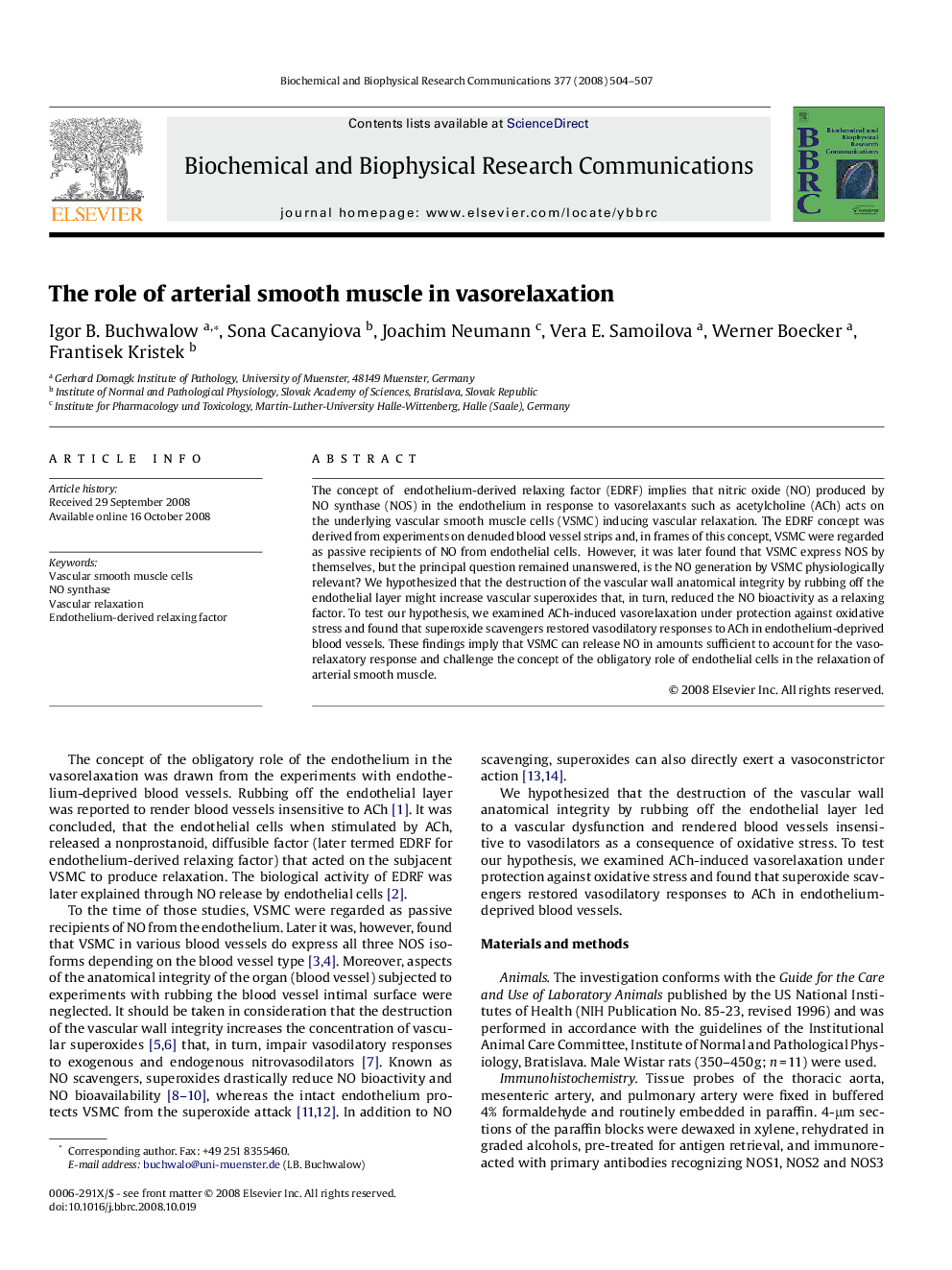| Article ID | Journal | Published Year | Pages | File Type |
|---|---|---|---|---|
| 1934865 | Biochemical and Biophysical Research Communications | 2008 | 4 Pages |
The concept of endothelium-derived relaxing factor (EDRF) implies that nitric oxide (NO) produced by NO synthase (NOS) in the endothelium in response to vasorelaxants such as acetylcholine (ACh) acts on the underlying vascular smooth muscle cells (VSMC) inducing vascular relaxation. The EDRF concept was derived from experiments on denuded blood vessel strips and, in frames of this concept, VSMC were regarded as passive recipients of NO from endothelial cells. However, it was later found that VSMC express NOS by themselves, but the principal question remained unanswered, is the NO generation by VSMC physiologically relevant? We hypothesized that the destruction of the vascular wall anatomical integrity by rubbing off the endothelial layer might increase vascular superoxides that, in turn, reduced the NO bioactivity as a relaxing factor. To test our hypothesis, we examined ACh-induced vasorelaxation under protection against oxidative stress and found that superoxide scavengers restored vasodilatory responses to ACh in endothelium-deprived blood vessels. These findings imply that VSMC can release NO in amounts sufficient to account for the vasorelaxatory response and challenge the concept of the obligatory role of endothelial cells in the relaxation of arterial smooth muscle.
